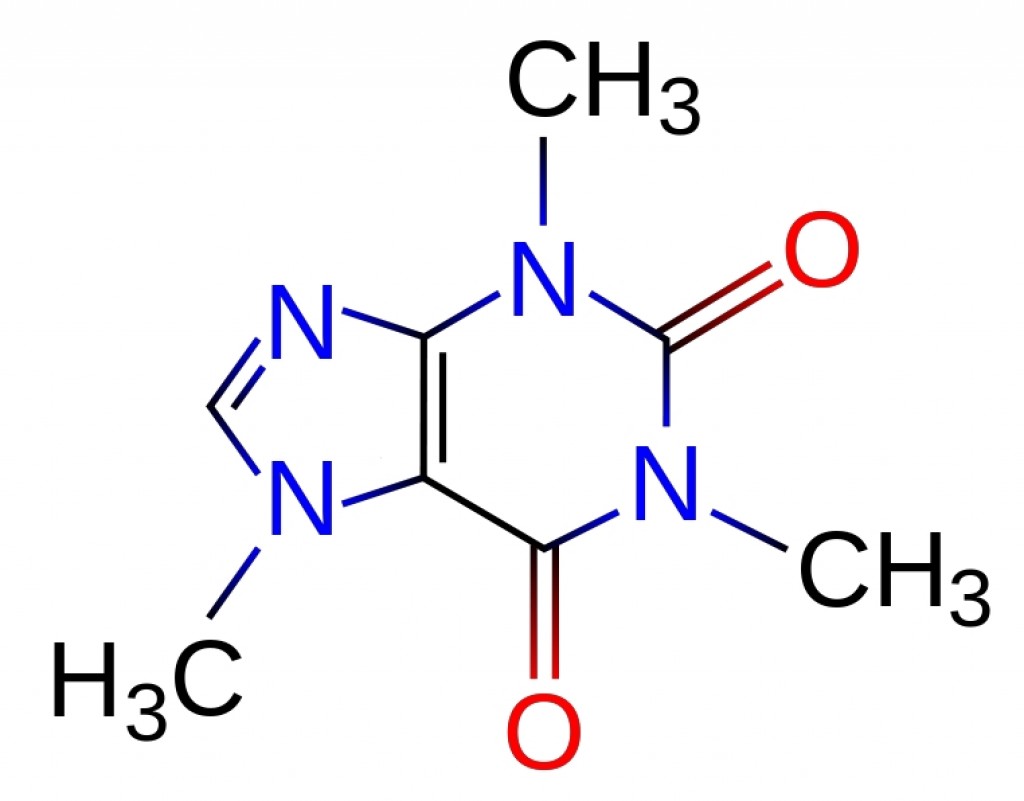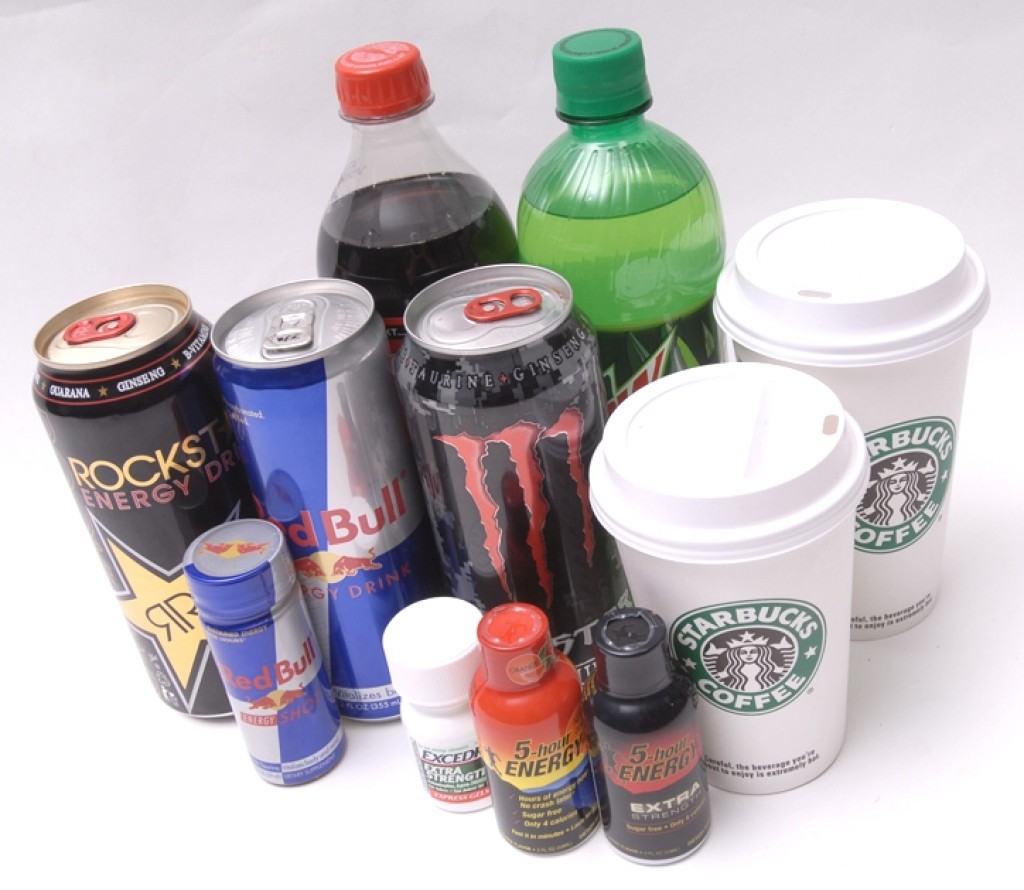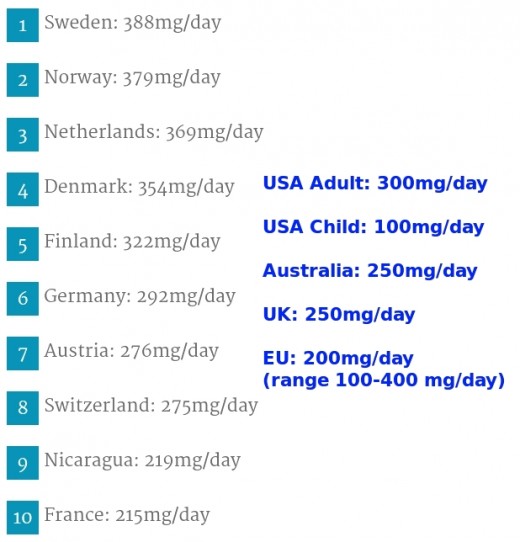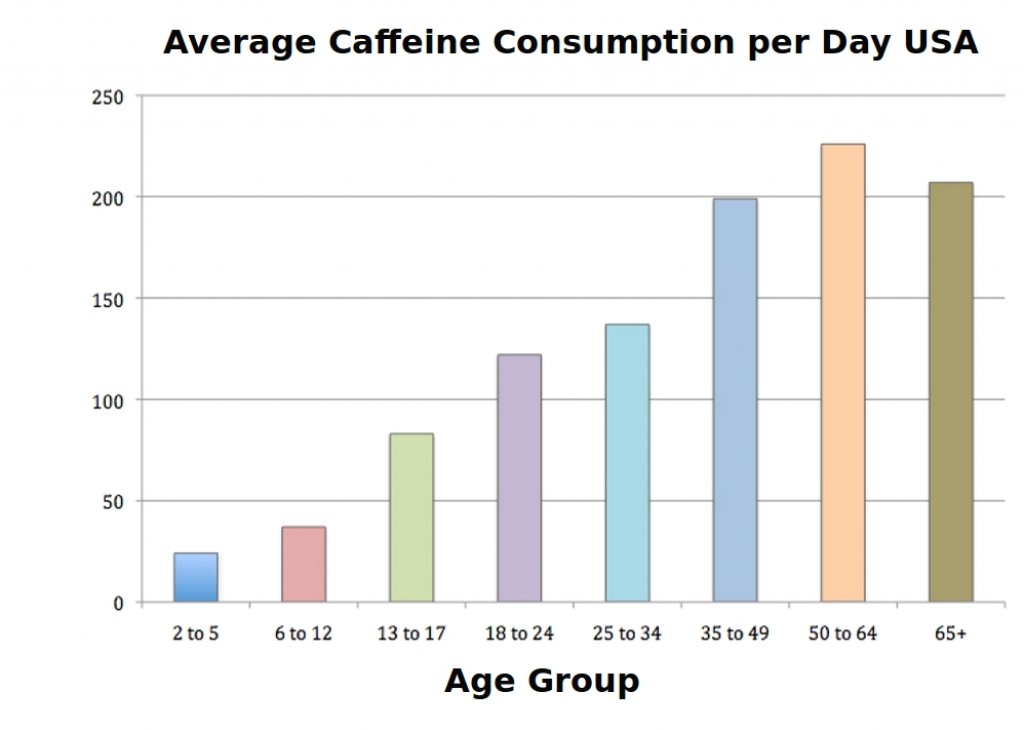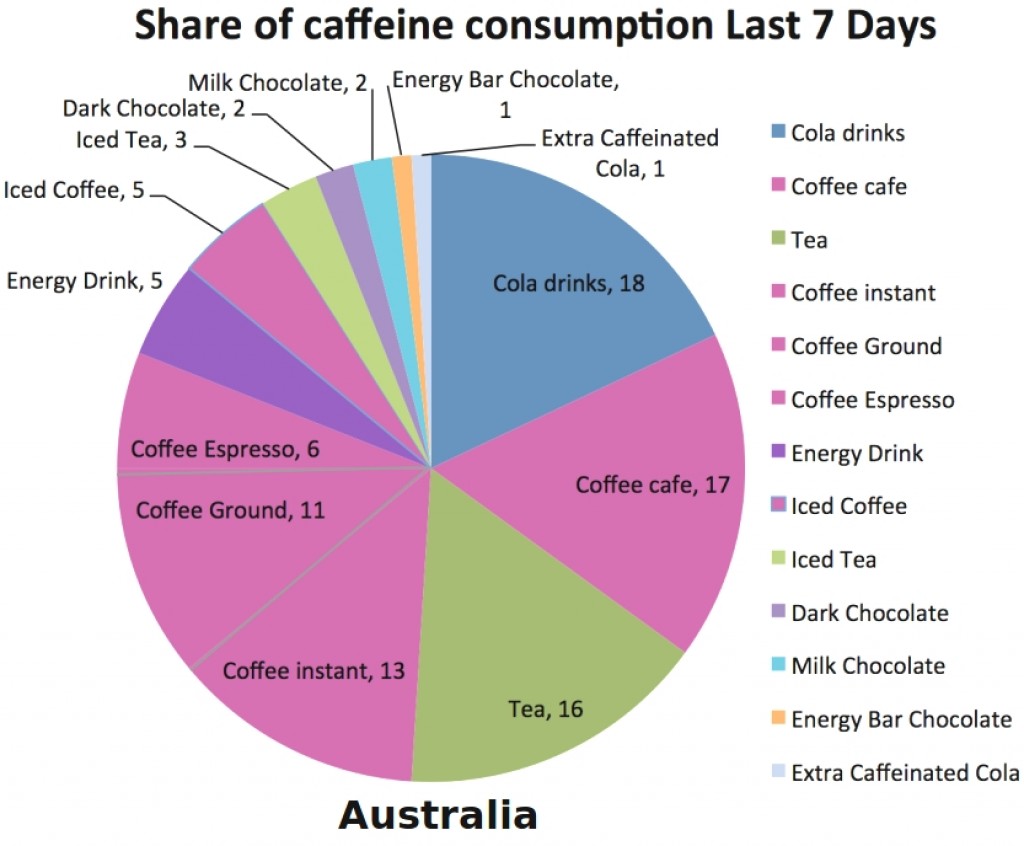Excess Caffeine: Risks and Side Effects of Too Much Caffeine - Recent Update
The European Panel on Dietetic Products, Nutrition and Allergies (EFDA) has released a major scientific review opinion on the safety of caffeine and health risks of excess consumption for adults, pregnant women and children.
The study warned that many people are exceeding safe levels because they are unaware that the caffeine from a wide variety of sources can accumulate.
Caffeine is found in energy drinks, many common soft drinks and beverages and many foods. Consuming high caffeine energy drinks with alcohol is risky for young people.
It is also found in chocolate and many foods made with chocolate contain significant amounts of caffeine. Tea also contains caffeine and many processed foods have surprising levels of caffeine.
Surveys have shown that only about half of the caffeine consumed by the average person in Australia, including teenagers, comes from drinking tea and coffee. It pays to read the labels and to consider how your caffeine consumption accumulates from various sources leaving your total level over what is considered safe level for various groups of people in society.
This article reviews the findings and recommendations.
What Levels of Caffeine Consumption are Safe?
The EFDA panel opinion provided the following recommendations for safe levels with low health risks:
Single Adult Dose - below 200 mg caffeine in a single dose (about 3 mg per kg of body weight for a 70-kg adult) do not give rise to safety concerns.
[Equivalent to 2-3 shot espresso coffee (3 x 80 mg) or a small energy drink]
Note: This dose does not pose risks when consumed less than 2 hours before exercise and when taken with alcohol with doses below 0.65 g of alcohol per kg of body weight.
(See the report for details).
Average Daily Intake for Non-Pregnant Adults - below to 400 mg per day (about 5.7 mg per kg body weight per day for a 70-kg adult).
[Equivalent to 5 cups of espresso coffee (5 x 80 mg); or a 3 cups of coffee with 2 cans of cola and 1 chocolate bar; or 2 energy drinks]
Average Daily Intake for Pregnant Women and Lactating Women - less than 200 mg per day and less than 200 mg in a single dose.
Single Dose and Average Daily Intake for Children and Adolescents - the panel found that there was insufficient information to derive a safe caffeine intake for children and Adolescents.
As an interim suggestion, the Panel suggested that the single and average caffeine consumption rates by adults (3 mg per kg body weight for a dose and 5.7 mg per kg body weight for daily intake) should serve as a guide.
Doing the calculations using these rates this would suggest the following rates for juveniles based on various sizes and body weights:
Recommended Daily Limits for Adults and Juveniles for Various Body Weights
|
Group
|
Body weight (kg)
|
Body Weight lb
|
Single Dose 3 mg per kg
|
Average Daily 5.7 mg per kg
|
|---|---|---|---|---|
|
Adult
|
70
|
154
|
210
|
399
|
|
Adult
|
80
|
176
|
240
|
456
|
|
Adult
|
90
|
198
|
270
|
513
|
|
Adult
|
100
|
220
|
300
|
570
|
|
|
|
|
|
|
|
Juvenile
|
70
|
154
|
210
|
399
|
|
Juvenile
|
60
|
132
|
180
|
342
|
|
Juvenile
|
50
|
110
|
150
|
285
|
|
Juvenile
|
40
|
88
|
120
|
228
|
|
Juvenile
|
30
|
66
|
90
|
171
|
|
Juvenile
|
20
|
44
|
60
|
114
|
Risks and Symptoms of Excess Caffeine Consumption
The fatal dose of caffeine is about 150 to 200 mg per kilogram of body mass. This is 50 times the single adult dose rate of 3 mg per kg of body weight. This is also equivalent to 75-100 cups of coffee for an average adult weighing 70 kg. .
Caffeine is known to boost athletic performance and is not a banned substance for athletes.
But adults consuming more than 400 mg of caffeine (about five espressos or tea/coffee with other sources) in a day may risk health damage.
Some of the symptoms and effects of excess caffeine consumption include:
► Heart problems
► Insomnia and sleep problems
► Panic attacks
► Restlessness
► Nervousness
► Over Excitement
► Flushed face
► Digestion problems and gastrointestinal complaints
Symptoms at extreme levels of caffeine consumption include:
► Muscle twitching
► Rapid heartbeats
► Abnormal electrical activity in the heart, arrhythmic heart beat.
► Psychomotor agitation - unintentional and purposeless motions, such as pacing around the room, wringing of hands, uncontrolled tongue movements, and other similar actions.
Sources of Caffeine - Beverages and Food
Only about half of the caffeine in the diets of most people is derived from coffee and tea. It pays to be aware of the other sources.
- Espresso - 80 mg
- Cup of tea - 50 mg
- Can of cola - 40 mg
- Cup of filter coffee - 90 mg
- Standard energy drink - 80 mg
- Bar of dark chocolate - 25 mg
- Bar of milk chocolate - 10 mg
Some products have very high caffeine contents which can quickly build to excess levels when combined with other intakes.
Products with more than 300 mg of caffeine per serving:
- All City NRG (16 oz.) 300
- Spike Shooter (8.4-oz. can) 300
- NOS High Performance Energy Drink (22 oz.) 357
Products with over 200 mg of caffeine per serving:
- Jolt Energy (23.5 oz) 280
- Rockstar Zero Carb (16 oz.) 240
- Arizona Green Tea Energy (16 oz.) 200
- Rockstar Roasted Coffee & Energy (15 oz.) 225
Products with over 140 mg of caffeine per serving:
- Full Throttle (16 oz.) 144
- Monster Energy (16 oz.) 160
- Rockstar Juiced Pomegranate (16 oz.) 160
- Rockstar Juiced Energy & Guava (16 oz.) 160
- Java Monster coffee and energy drink (15 oz.) 160
- Starbucks Double Shot Energy & Coffee (15 oz.) 146
Other products with surprisingly high caffeine levels
- Pepsi (12 oz.) 38
- Jolt Cola (12 oz.) 100
- Mountain Dew (12 oz.) 54
- Diet Pepsi Max (12 oz.) 69
- Crystal Light Energy (16 oz.) 120
- Propel Invigorating Water (20 oz.) 50
- Jolt Caffeine Energy Gum (2 pieces) 26
- Enviga Sparkling Green Tea (12 oz.) 100
- Vault Citrus Hybrid Energy Soda (12 oz.) 69
- Naked Juice Energy 100% Juice Smoothie (15.2 oz.) 82
- Diet Coke Plus with vitamins and minerals (12 oz.) 34
Average Caffeine Consumption Rates by Country
The average caffeine consumption rates are already quite high (see the image).
The EFSA Panel warned that many people were consuming more than the safe level or 400 mg per day.
Teenagers who consume energy drinks with very high levels of caffeine are particularly at risk especially when combined with alcohol.
Several European countries have very high caffeine consumption rates.
There is evidence that the average consumption rates in USA have fallen in recent years, but many people still have very high intakes. The percentages of the population consuming more than 400 mg in some European countries are:
- 33% Denmark
- 17% Netherlands
- 14% in Germany

